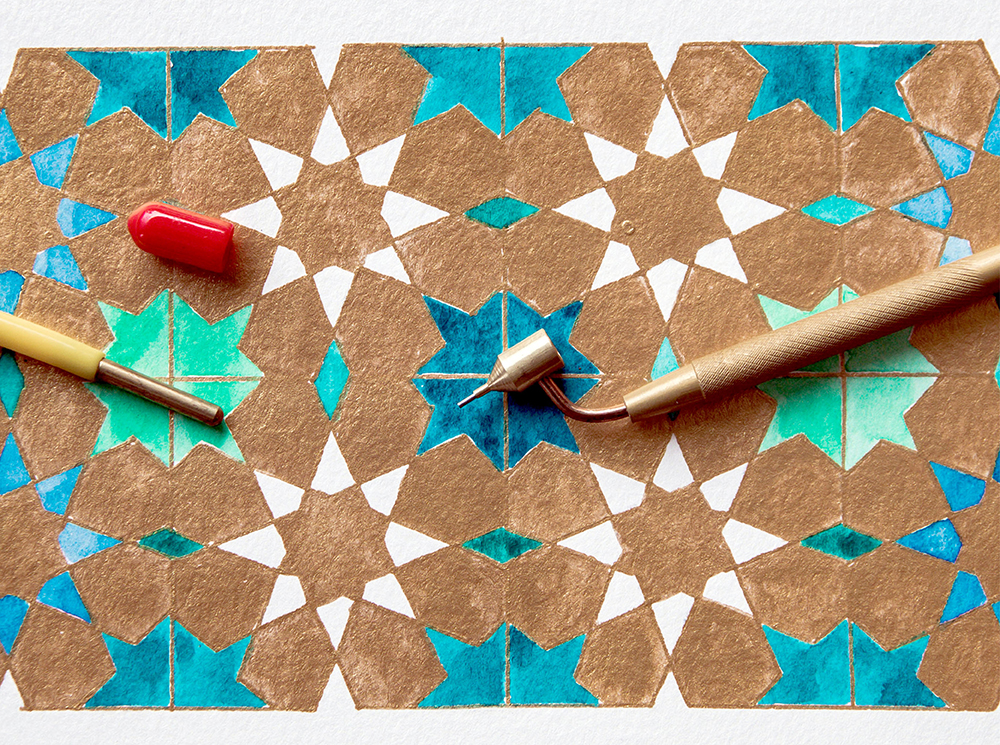More Details
About Eastern Geometric Art: Islamic Geometric Art has deep roots in both historical and modern context. The term Islamic art is not used solely to describe religious art or architecture but applies to all art forms produced in this style. Historically, this art style avoided figurative images and was predominantly geometric or floral. Artists use geometry to explore non-figural art and mathematically-based designs to apply their work to architecture, tile work and other embellishments—a famous example being the tessellations found in the Taj Mahal. Many of the underlying designs originated from ancient cultures: Greek, Roman, Byzantine, Central Asian and Persian to name a few. Eastern design and influence can be found throughout Europe, Africa, the Middle East and Asia. Islamic geometric art is well-respected for its beauty and the impressive skill to execute such a detailed, precise technique. This art style flourished so richly that the distinctive designs are collectively known as Islamic Geometric Design.
When Zahra began exploring Islamic geometric art, she was immediately drawn in by the complexity behind the intersecting shapes and, how she describes it, the way the designs bring ‘meaning to your eyes’. A design can travel from feeling like you’re searching and exploring the art unknown—unsure of what the final outcome will be—to discovering the limitless possibilities of patterns. A practice that we’ve found envelopes you as soon as you get started building and shaping your custom design.





